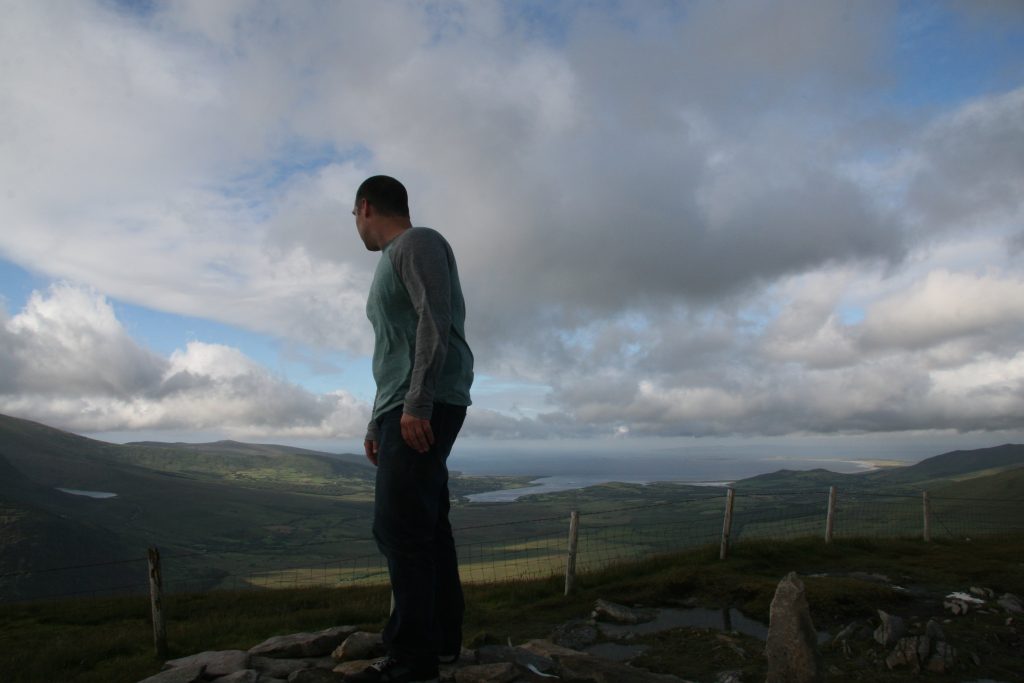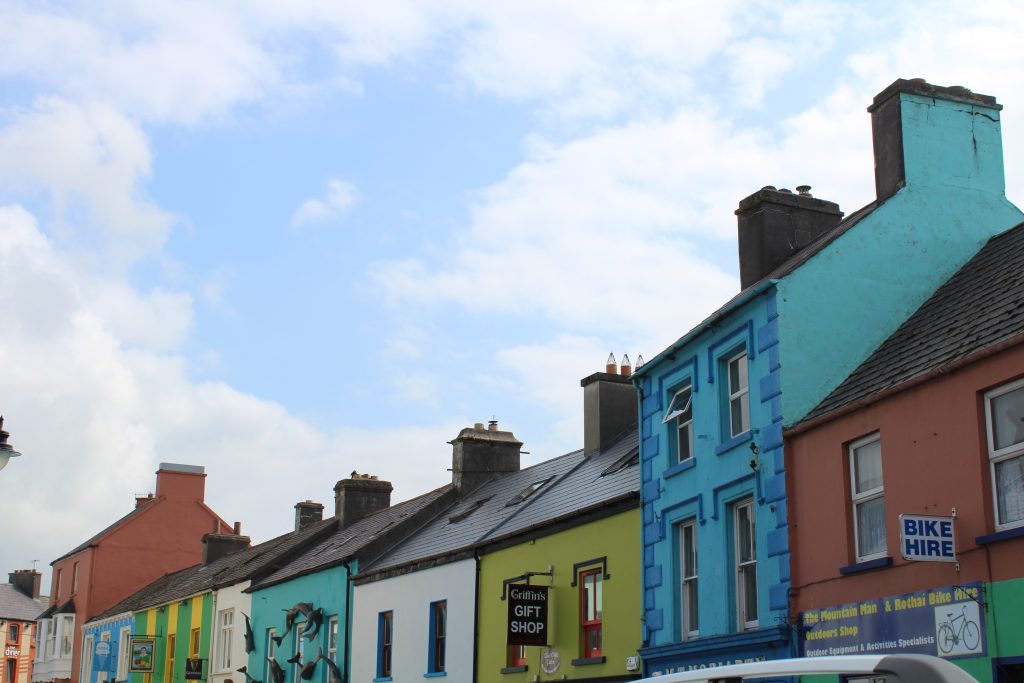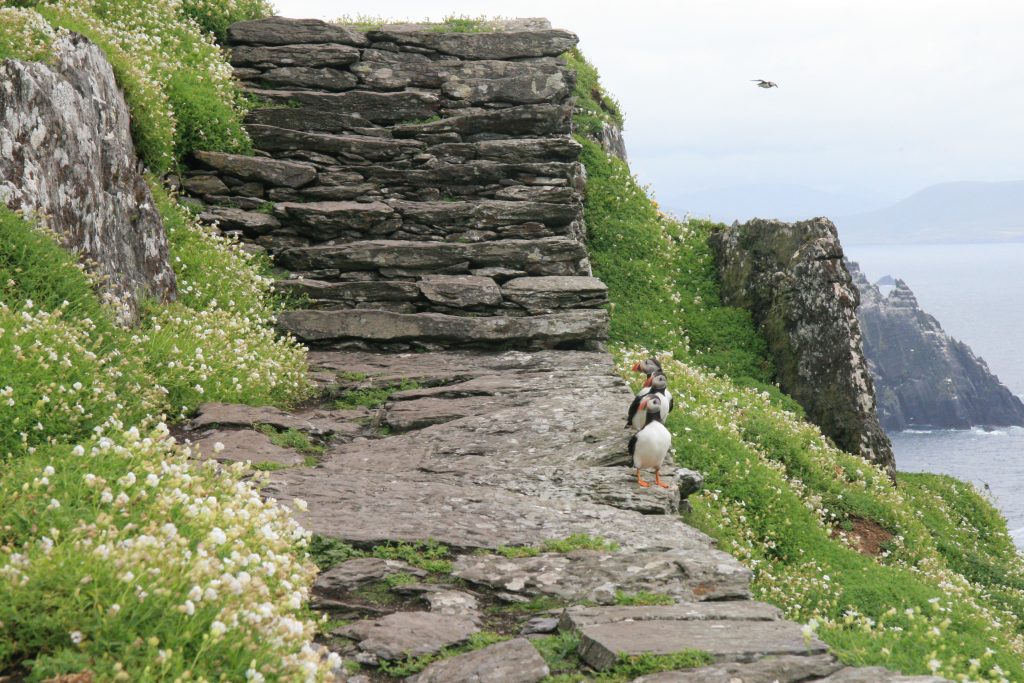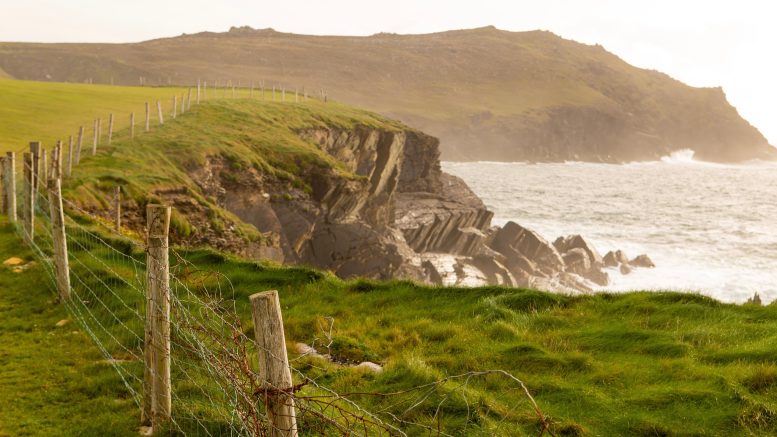Across centuries of Celtic storytelling, there came this idea about places that draw a floating, fog-shrouded sensation between our edge existence and the grey realms beyond it. The Irish call such parts of the terrane “thin places” – rare, uncanny convergences where mystical force and sublime earthliness somehow embrace one another.
Of course, locals and folklorists on the isle are the experts on thin places; but if a quiet, near-haunting beauty born into the land can offer a glimpse, then even outsiders may experience those spiritual chills when in the mountains of County Kerry.
It’s a sea-blasted seam of the southwest coast, with a turn of its waves breaking around the Iveragh Peninsula. The views here feel removed from the world. And they seem “thin” too, especially when wandering up the hillsides at dawn, climbing those brook-riven pyramids of rock to find dewy grass and ponds bloated with spring water crashing down the mountain. Winds and whispers play across the horizon: There’s a morning glaze cresting land-lifts that are damp, wide and breathing – pocked with an endless stubble of dove-dark stones hiding in the cloud-shadow. It’s as if there is a balladry sung into the landscape. Streams go rushing through the pastures in wild veins, collecting in holes that shine like pieces of clumsy glass under the sky.

There are stories of thinness here. One centers on the Slieve Mish Mountains above Dingle, where it’s said that, long ago, a magician named Cú Roí imprisoned a woman he was obsessed with by locking her in a stone fort that was shaking and shape-shifting. Warriors kept trying to rescue the maiden. After a series of battles – and Cú Roí himself being killed – the conjurer’s personal poet grabbed the woman and leaped over a cliffside with her. True to Irish storytelling, though Cú Roí was powerful, it was his poet who wrote the story’s final act. Today, trekking through Slieve Mish offers no signs of where that poet and maiden went falling, though it’s something to dream about as clouds loom on weathered ridges and the rolling bareness is brushed in milky apparitions.
“Let us go forth, the tellers of tales, and seize whatever prey the heart longs for, and have no fear … Everything exists, everything is true, and the earth is only a little dust under our feet … They, with their wild music as of winds blowing in the reeds, seemed to me the very inmost voice of Celtic sadness, and of Celtic longing for infinite things the world has never seen.” – William Butler Yeats, ‘The Celtic Twilight’
If music and conversation equal their own kind of magic, then the town of Dingle might qualify as its own vibrantly “thin place.” It has a sense of transcendence when the early sunlight bathes its narrow lanes, that foggy drift of bullion creeping from the outer hills and the under the sea’s breath of light, drifting silkworms. Morning walks will pass by cottages washed in the thin grey of breaking shadows. Some lanes are flanked by old walls of wedged stones colored in orange speckle and dead pearl. Crossing Bridge Street, a view of the harbor opens up, its array of sail masts lifting like bone-nails against the green shine of the western shore.
One of Dingle’s spells comes from timeless pubs. A classic is O’Flaherty’s, a gloriously dim drinking sanctuary haunted by lost pints of yore. On a lazy afternoon, lamplight traces a moss hue painted on its entry and its cold, coffin-cut slabs of floor stone. It’s a place for drinking Powers whiskey under a wagon wheel chandelier, where only hints of daylight push through Celtic crosses guarding the upper windows: What little sunlight that does breach these martyr markers turns a corpse-yellow carousel of silhouettes over haggard portraits and faded newspaper clippings. The atmosphere makes you want to lift a glass to those greyed remembrances of bygone Fife and Drum bands and their rougish sheep dogs.
From the dusty piano to a broken mandolin by the fireplace, O’Flaherty’s is a spot to embrace the whiskey’s embers glowing in one’s core.

And it doesn’t hurt to have some whiskey when imagining the yarn of Dún an Óir, a story whispered about on the Dingle Peninsula for generations. It begins in 1580 when Spanish troops who’d come to Ireland’s defense against the English Crown got surrounded during the Siege of Smerwick. As the tale is told, when these 400 unlucky Spaniards tried to escape out to Dún an Óir, they were savagely cut down by Royal forces: The men were given no quarter. Legend has it that their slaughtered corpses were left unburied on the peninsula’s seaside. If this happened in some parts of Ireland, it might just have been a dry note to the Second Desmond Rebellion. But the shores and mountains of Kerry have an energy – and they have secrets – and thus it’s said that on some nights one can hear Spanish moaning in the breeze, or glimpse the pale shapes of whitened bones where the waves touch. It’s even rumored that locals sometimes catch of whiff of widespread death coming in off the lunar tide.
Bones made of coral,
and skin from wet sands.
She devoured lost sailors
and made treasure their hands.
She rolled with the waves
of the great Celtic Sea,
and pulled with the undertow
‘round County Kerry.
–Leonard Sine, ‘The Mermaid’
One of Kerry’s oldest cultural treasures lies over he waves from a village called Portagmee. That town offers its own quiet awakenings at daybreak: After the witching hour, its harbor is slowly caught in champagne light overtaking its battered boats, warming their chipped red hulls and glaring on their white, wave-wrecked pilot houses. And beyond these vessels and the tumbling Atlantic – barely visible in the Celtic haze – is the shrouded monastic site of Skellig Michael.
Also known as the Great Skellig, this island of towering jags holds one of the strangest places of worship anywhere. The monks who built its bee hive-shaped rock huts did so in the Early Medieval period, forging a life on the edge of nowhere when memories of the Roman Empire were still alive.

Today, Skellig Michael is one of only two UNESCO World Heritage Sites in the Republic of Ireland. It’s also the second-largest colony for gannet birds on the planet. Climbing its cliffy path of 618 monks’ stones can be dangerous, even deadly; but the feelings that come from reaching the top of St Fionan’s monastery are beyond words. It’s having a whole world of endless tides and endless sky surrounding you.
The oldest legend of Skellig Michael involves Milesius, an ancient conqueror of the Emerald Isle. A long-told myth recounts how Milesius was sailing an invasion force towards Kerry in 1400 BCE when a race of Irish eternals, known as the Tuatha de Danann, decided to stop him. The Tuatha de Danann summoned a spectral storm over the waters, sinking Milesius’s ships and drowning two of his sons. The chieftain was forced to bury one of his boys, Donn, under a stone slab on Skellig Michael. It’s a story of ambition, loss, elegy and Nature – the story of a “thin pace” – and in some ways, the story of Kerry itself.
Scott Thomas Anderson is also the host of the ‘Drinkers with Writing Problems’ podcast, Episode 1 of which was written and recorded in Ireland.


Be the first to comment on "Seeking ‘thin places’ in Ireland’s County Kerry "